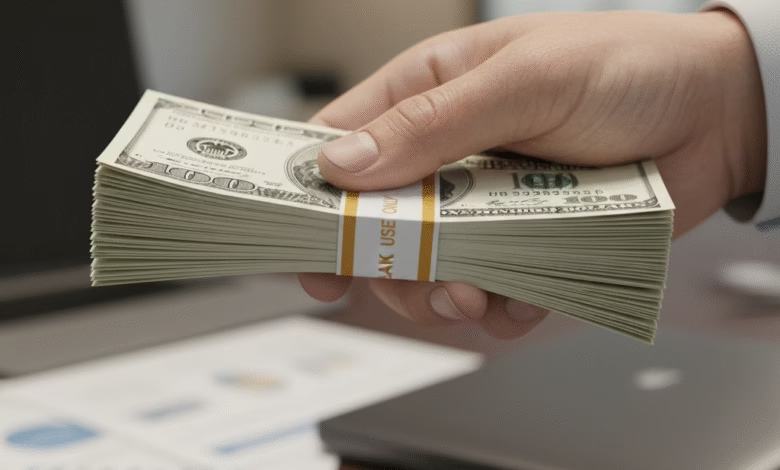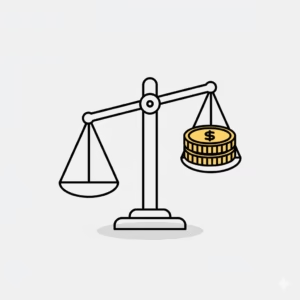How Loss Aversion Shapes Investor Decisions
Understand how the fear of losing can impact your financial decisions

Have you ever found a $20 bill on the street? It feels great. Now, have you ever lost a $20 bill? It feels awful—far more painful than the pleasure of finding one. If you’ve felt this lopsided emotional reaction, you’ve experienced one of the most powerful and destructive forces in personal finance: loss aversion.
This deep-seated psychological quirk, hardwired into our brains for survival, explains why investors often make irrational choices that sabotage their own long-term success. They hold onto failing investments for far too long, sell their biggest winners prematurely, and stay frozen in fear when the best opportunities arise.
This article will pull back the curtain on this invisible force. We will explore what loss aversion is, how it manifests in your portfolio through specific, costly mistakes, and most importantly, provide you with actionable strategies to build a mental framework that can overcome it. Understanding this single concept is one of the most significant steps you can take toward becoming a more rational and profitable investor.
What is Loss Aversion? Unpacking the Psychology of Financial Pain

At its core, loss aversion is a cognitive bias discovered by Nobel Prize-winning psychologists Daniel Kahneman and Amos Tversky. Their groundbreaking work on Prospect Theory revealed a stunning truth about human nature: we feel the pain of a loss approximately twice as strongly as we feel the pleasure of an equivalent gain.
Losing $1,000 feels as painful as winning $2,000 feels good.
Think about that for a moment. This isn’t a sign of weakness; it’s a feature of our evolutionary programming. For our ancient ancestors, losing a week’s worth of food was a far more significant event (potentially life-threatening) than finding an extra week’s worth of food. Our brains, therefore, evolved to be hyper-sensitive to threats and losses.
While this kept us safe on the savanna, it wreaks havoc in the modern stock market. The market is a system of calculated risk-taking for long-term gain. It requires us to tolerate temporary, on-paper “losses” to achieve substantial growth. But our loss-averse brain interprets every dip in our portfolio not as a normal fluctuation, but as a direct and immediate threat, triggering a fight-or-flight response that leads to terrible financial decisions.
Holding On Too Long: How the Sunk Cost Fallacy Fuels Bad Decisions
One of the most common ways loss aversion manifests is by causing investors to cling to their losing stocks. Let’s say you bought a stock, “Company X,” at $100 per share. A few months later, due to poor earnings and bad news, it’s trading at $50.
A rational analysis would involve asking: “Based on everything I know today, is Company X a good investment at $50?”
But loss aversion changes the question to: “I can’t sell now! If I do, I’ll lock in a 50% loss.”
By refusing to sell, you avoid the immediate, painful emotional event of realizing the loss. Instead, you hold on, hoping the stock will somehow climb back to your “break-even” point of $100. This is a classic example of the sunk cost fallacy. The money you originally invested is already gone—it’s a sunk cost. Its original purchase price has zero bearing on its future prospects.
Clinging to a loser does two things, both destructive:
- It ties up your capital: The money stuck in underperforming Company X could be redeployed into a more promising investment that has a real chance of generating returns.
- It increases your risk: You are essentially doubling down on a bad decision, hoping for a miracle instead of making a strategic choice. Often, a stock that has fallen 50% has a higher chance of falling another 50% than it does of recovering 100% to your break-even point.
Selling Winners Too Soon: Why Fear Caps Your Portfolio’s Potential

Loss aversion has an equally damaging twin brother: selling your winning investments far too early. Imagine you bought another stock, “Company Y,” at $50, and it has since climbed to $80. You have a nice 60% gain.
What does your loss-averse brain tell you? “Sell it! Lock in that profit before it disappears!”
The driving emotion here is not greed, but fear—the fear that your wonderful gain will turn into a painful loss. This fear is so powerful that investors will often cash out of their best-performing assets to get the small, certain pleasure of a realized gain and avoid the potential future pain of a loss.
This is how you end up with a portfolio of “trimmed flowers and watered weeds.” You cut off your biggest sources of growth while nurturing your biggest losers. The true path to long-term wealth is to do the exact opposite: let your winners run and cut your losers ruthlessly. Legendary investors have built their fortunes on a handful of big winners that they held for years, or even decades, allowing the power of compounding to work its magic. Loss aversion prevents this by encouraging you to cash in your lottery ticket for a small, quick payout.
The Disposition Effect: A Toxic Cocktail of Premature Gains and Lingering Losses
When you combine the previous two behaviors—holding losers too long and selling winners too soon—you get what academics call The Disposition Effect. It is the formal name for this widespread, wealth-destroying tendency.
Investors subject to the disposition effect systematically end up with portfolios that are full of their worst ideas (the losers they couldn’t bring themselves to sell) while having already cashed out of their best ideas (the winners they sold for a small profit). It’s like a sports coach who benches his star players after they score and gives extra playing time to the ones fumbling the ball. It makes no logical sense, yet it’s one of the most documented and consistent behaviors in finance.
This isn’t just a small mistake; it has a massive cumulative impact on your net worth over time. It is the financial equivalent of driving with the emergency brake on—you might move forward, but you’ll do so slowly, with a lot of friction, and you’ll never reach your true potential.
Paralyzed by Fear: The Hidden Cost of Avoiding Market Risk Entirely
For some, the pain of a past market downturn is so acute that loss aversion drives them out of the market altogether. After experiencing a significant loss, like in the 2008 financial crisis or the 2020 COVID crash, many people vow “never again.” They pull their money out and sit in cash, savings accounts, or CDs.
While this feels safe, it is perhaps the most damaging long-term decision of all. It guarantees that your money will lose purchasing power to inflation year after year. The temporary pain of a market downturn is a known risk, but the certain, slow-motion loss from inflation is a guaranteed outcome for those who avoid investing.
By trying to avoid all risk of loss, you are guaranteeing a different kind of loss. History has shown that every market crash has been followed by a recovery and a new all-time high. The investors who are hurt the most are not necessarily those who held through the crash, but those who sold at the bottom and never got back in, missing the powerful rebound that followed.
Building Your Defenses: Actionable Strategies to Conquer Loss Aversion

Recognizing this bias in yourself is the first step. Defeating it requires building a system that removes your emotional brain from the decision-making process.
1. Create a Mechanical Investment Plan
Before you invest a single dollar, write down your rules of engagement. This is your Investment Policy Statement (IPS). It should clearly define your goals, your time horizon, and your criteria for buying and selling an investment. For example, a rule could be: “I will sell any stock if its founding business principles change,” or “I will trim any position that grows to more than 10% of my portfolio.” Having pre-set, logical rules prevents you from making emotional decisions in the heat of the moment.
2. Automate Your Contributions
Set up automatic investments into a diversified portfolio of index funds or ETFs every single month. This strategy, called dollar-cost averaging, is a powerful weapon against loss aversion. When the market is down (and your brain is screaming “danger!”), your automated plan calmly buys more shares at lower prices. When the market is up, it buys fewer shares. This removes your emotions entirely and ensures you are consistently investing through all market cycles.
3. Use Stop-Loss Orders Strategically
A stop-loss order is an instruction you give your broker to automatically sell a stock if it falls to a certain price. For example, you could set a 15% trailing stop-loss. This can be an effective way to enforce discipline and cut losers without having to make the painful emotional decision yourself. Be aware, however, that normal market volatility can sometimes trigger these orders prematurely, so use them as part of a broader strategy.
4. Reframe Your Mindset: Think in Probabilities
Professional investors don’t see investments as “wins” or “losses.” They see them as a series of probabilistic bets. They know that even with the best research, some investments won’t work out. A “loss” is not a personal failure; it’s an expected outcome in a percentage of cases. By de-personalizing the loss, you can make the decision to sell a losing asset more analytically and less emotionally. Consider it the “tuition” you pay for your market education.
5. Focus on Your Total Portfolio, Not Individual Stocks
Stop checking the performance of your individual stocks every day. This only amplifies the emotional highs and lows. Instead, schedule a check-in once a month or once a quarter to review the performance of your entire portfolio. A well-diversified portfolio will always have some winners and some losers. What matters is the overall trajectory. This zoomed-out perspective dampens the emotional sting of any single underperforming asset.
Winning the Inner Game of Investing

Investing is often described as a game played on the field of the stock market, but the most important battles are fought within our own minds. Loss aversion is a formidable opponent—a ghost from our evolutionary past that haunts our modern financial lives.
By understanding its power, recognizing how it manipulates your behavior, and implementing disciplined, system-based strategies, you can neutralize its threat. You can learn to let your winners ride, cut your losers with discipline, and stay the course when fear is all around you. Mastering your own psychology is the final and most important step in the journey from being a reactive amateur to a proactive and successful long-term investor.





